Contents
SECTION I: RTL to GDS-II, or Synthesis, Place, and Route
Chapter 1: Design Flows
1.1 Introduction
1.2 Invention
1.3 Implementation
1.4 Integration
1.5 Future Scaling Challenges
1.6 Conclusion
Chapter 2: Logic Synthesis
2.1 Introduction
2.2 Behavioral and Register Transfer-Level Synthesis
2.3 Two-Level Minimization
2.4 Multilevel Logic Minimization
2.5 Enabling Technologies for Logic Synthesis
2.6 Sequential Optimization
2.7 Physical Synthesis
2.8 Multivalued Logic Synthesis
2.9 Summary
Chapter 3: Power Analysis and Optimization from Circuit to Register-Transfer Levels
3.1 Introduction
3.2 Power Analysis
3.3 Circuit-Level Power Optimization
3.4 Logic Synthesis for Low Power
3.5 Conclusion
Chapter 4: Equivalence Checking
4.1 Introduction
4.2 Equivalence Checking Problem
4.3 Boolean Reasoning
4.4 Combinational Equivalence Checking
4.5 Sequential Equivalence Checking
4.6 Summary
Chapter 5: Digital Layout — Placement
5.1 Introduction: Placement Problem and Contexts
5.2 Global Placement
5.3 Detailed Placement and Legalizers
5.4 Placement Trends
5.5 Academic and Industrial Placers
5.6 Conclusions
Chapter 6: Static Timing Analysis
6.1 Introduction
6.2 Representation of Combinational and Sequential Circuits
6.3 Gate Delay Models
6.4 Timing Analysis for Combinational Circuits
6.5 Timing Analysis for Sequential Circuits
6.6 Clocking Disciplines: Edge-Triggered Circuits
6.7 Clocking and Clock-Skew Optimization
6.8 Statistical Static Timing Analysis
6.9 Conclusion
Chapter 7: Structured Digital Design
7.1 Introduction
7.2 Datapaths
7.3 Programmable Logic Arrays
7.4 Memory and Register Files
7.5 Structured Chip Design
7.6 Summary
Chapter 8: Routing
8.1 Introduction
8.2 Types of Routers
8.3 A Brief History of Routing
8.4 Common Routing Algorithms
8.5 Additional Router Considerations
Chapter 9: Exploring Challenges of Libraries for Electronic Design
9.1 Introduction
9.2 What Does It Mean to Design Libraries?
9.3 How Did We Get Here, Anyway?
9.4 Commercial Efforts
9.5 What Makes the Effort Easier?
9.6 The Enemies of Progress
9.7 Environments That Drive Progress
9.8 Libraries and What They Contain
9.9 Summary
Chapter 10: Design Closure
10.1 Introduction
10.2 Current Practice
10.3 The Future of Design Closure
10.4 Conclusion
Chapter 11: Tools for Chip-Package Codesign
11.1 Introduction
11.2 Drivers for Chip-Package Codesign
11.3 Digital System Codesign Issues
11.4 Mixed-Signal Codesign Issues
11.5 I/O Buffer Interface Standard and Other Macromodels
11.6 Conclusions
Chapter 12: Design Databases
12.1 Introduction
12.2 History
12.3 Modern Database Examples
12.4 Fundamental Features
12.5 Advanced Features
12.6 Technology Data
12.7 Library Data and Structures: Design-Data Management
12.8 Interoperability Models
Chapter 13: FPGA Synthesis and Physical Design
13.1 Introduction
13.2 System-Level Tools
13.3 Logic Synthesis
13.4 Physical Design
13.5 Looking Forward
SECTION II: Analog and Mixed-Signal Design
Chapter 14: Simulation of Analog and RF Circuits and Systems
14.1 Introduction
14.2 Differential-Algebraic Equations for Circuits via Modified Nodal Analysis
14.3 Device Models
14.4 Basic Circuit Simulation: DC Analysis
14.5 Steady-State Analysis
14.6 Multitime Analysis
14.7 Noise in RF Design
14.8 Conclusions
Chapter 15: Simulation and Modeling for Analog and Mixed-Signal Integrated Circuits
15.1 Introduction
15.2 Top-Down Mixed-Signal Design Methodology
15.3 Mixed-Signal and Behavioral Simulation
15.4 Analog Behavioral and Power Model Generation Techniques
15.5 Symbolic Analysis of Analog Circuits
15.6 Conclusions
Chapter 16: Layout Tools for Analog Integrated Circuits and Mixed-Signal Systems-on-Chip: A Survey
16.1 Introduction
16.2 Analog Layout Problems and Approaches
16.3 Analog Cell Layout Strategies
16.4 Mixed-Signal System Layout
16.5 Field-Programmable Analog Arrays
16.6 Conclusions
SECTION III: Physical Verification
Chapter 17: Design Rule Checking
17.1 Introduction
17.2 Geometric Algorithms for Physical Verification
17.3 Hierarchical Data Structures
17.4 Time Complexity of Hierarchical Analysis
17.5 Connectivity Models
17.6 Parallel Computing
17.7 Future Roles for Verification
Chapter 18: Resolution Enhancement Techniques and Mask Data Preparation
18.1 Introduction
18.2 Lithographic Effects
18.3 RET for Smaller k[sub(1)]
18.4 Software Implementations of RET Solutions
18.5 Mask Data Preparation
18.6 Summary
Chapter 19: Design for Manufacturability in the Nanometer Era
19.1 Introduction
19.2 Taxonomy of Yield Loss Mechanisms
19.3 Logic Design for Manufacturing
19.4 Parametric Design for Manufacturing Methodologies
19.5 Design for Manufacturing Integration in the Design Flow: Yield–Aware Physical Synthesis
19.6 Summary
Chapter 20: Design and Analysis of Power Supply Networks
20.1 Introduction
20.2 Voltage-Drop Analysis Modes
20.3 Linear System Solution Techniques
20.4 Models for Power Distribution Networks
20.5 Conclusions
Chapter 21: Noise Considerations in Digital ICs
21.1 Introduction
21.2 Why Has Noise Become a Problem for Digital Chips?
21.3 Noise Effects in Digital Designs
21.4 Static Noise Analysis
21.5 Electrical Analysis
21.6 Fixing Noise Problems
21.7 Summary and Conclusions
Chapter 22: Layout Extraction
22.1 Introduction
22.2 Early History
22.3 Problem Analysis
22.4 System Capabilities
22.5 Converting Drawn Geometries to Actual Geometries
22.6 Designed Device Extraction
22.7 Connectivity Extraction
22.8 Parasitic Resistance Extraction
22.9 Capacitance Extraction Techniques
22.10 Inductance Extraction Techniques
22.11 Network Reduction
22.12 Process Variation
22.13 Conclusions and Future Study
Chapter 23: Mixed-Signal Noise Coupling in System-on-Chip Design: Modeling, Analysis, and Validation
23.1 Introduction
23.2 Mechanisms and Effects of Mixed-Signal Noise Coupling
23.3 Modeling of Mixed-Signal Noise Coupling
23.4 Mixed-Signal Noise Measurement and Validation
23.5 Application to Placement and Power Distribution Synthesis
23.6 Summary
SECTION IV: Technology CAD
Chapter 24: Process Simulation
24.1 Introduction
24.2 Process Simulation Methods
24.3 Ion Implantation
24.4 Diffusion
24.5 Oxidation
24.6 Etch and Deposition
24.7 Lithography and Photoresist Modeling
24.8 Silicidation
24.9 Mechanics Modeling
24.10 Putting It All Together
24.11 Conclusions
Chapter 25: Device Modeling — From Physics to Electrical Parameter Extraction
25.1 Introduction
25.2 MOS Technology and Intrinsic Device Modeling
25.3 Parasitic Junction and Inhomogeneous Substrate Effects
25.4 Device Technology Alternatives
25.5 Conclusions
Chapter 26: High-Accuracy Parasitic Extraction
26.1 Introduction
Part I: Extraction via Fast Integral Equation Methods
Part II: Statistical Capacitance Extraction
Index
A
B
C
D
E
F
G
H
I
J
K
L
M
N
O
P
Q
R
S
T
U
V
W
X
Y
Z
Color Plates

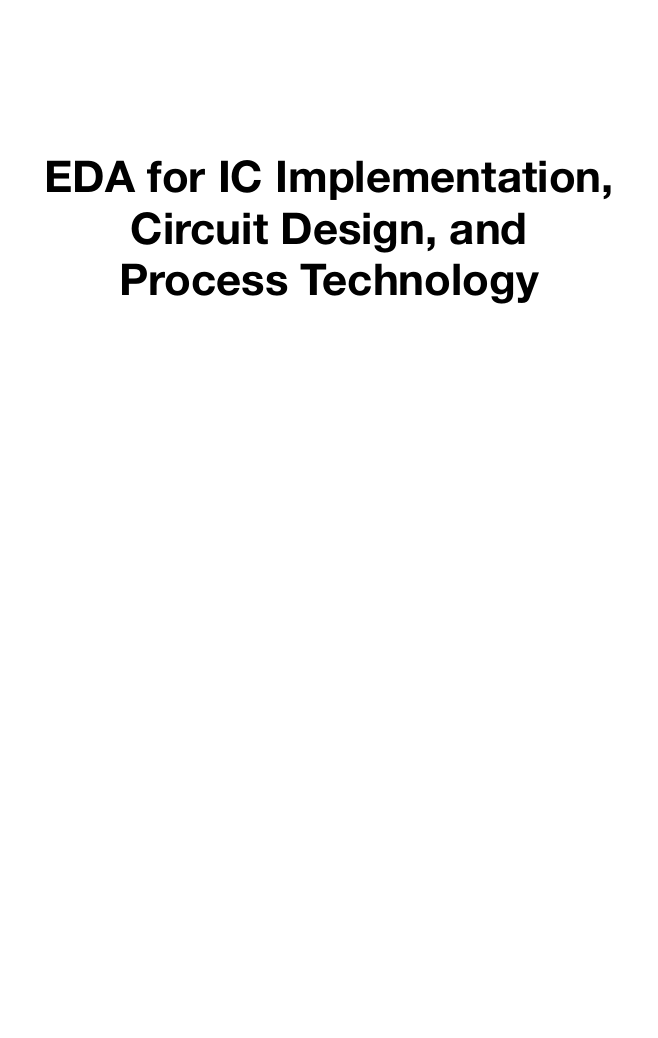
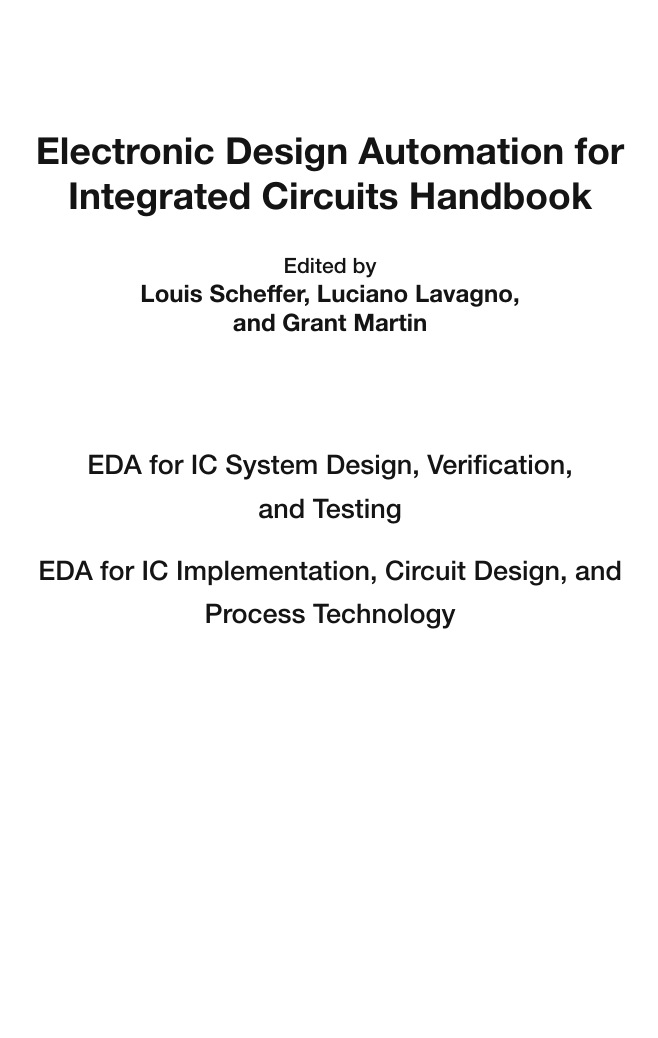
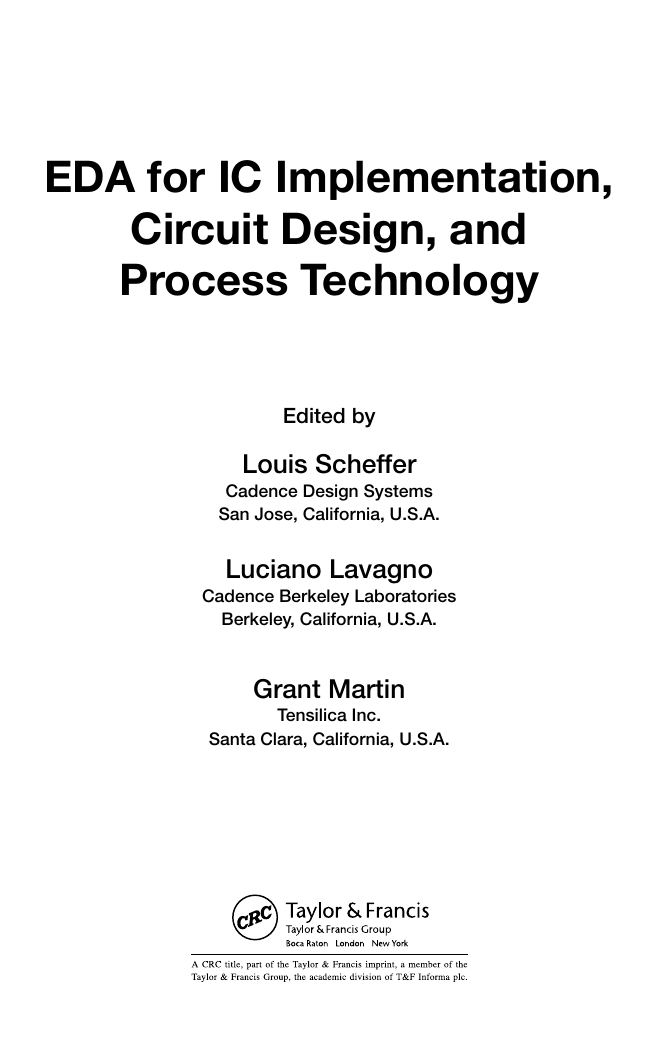
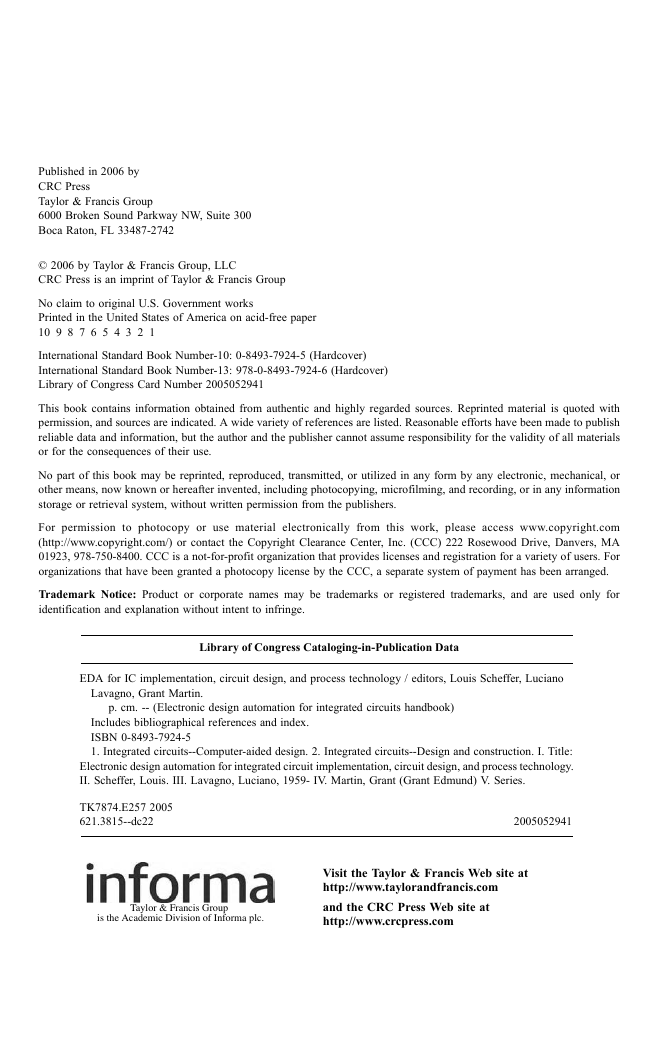


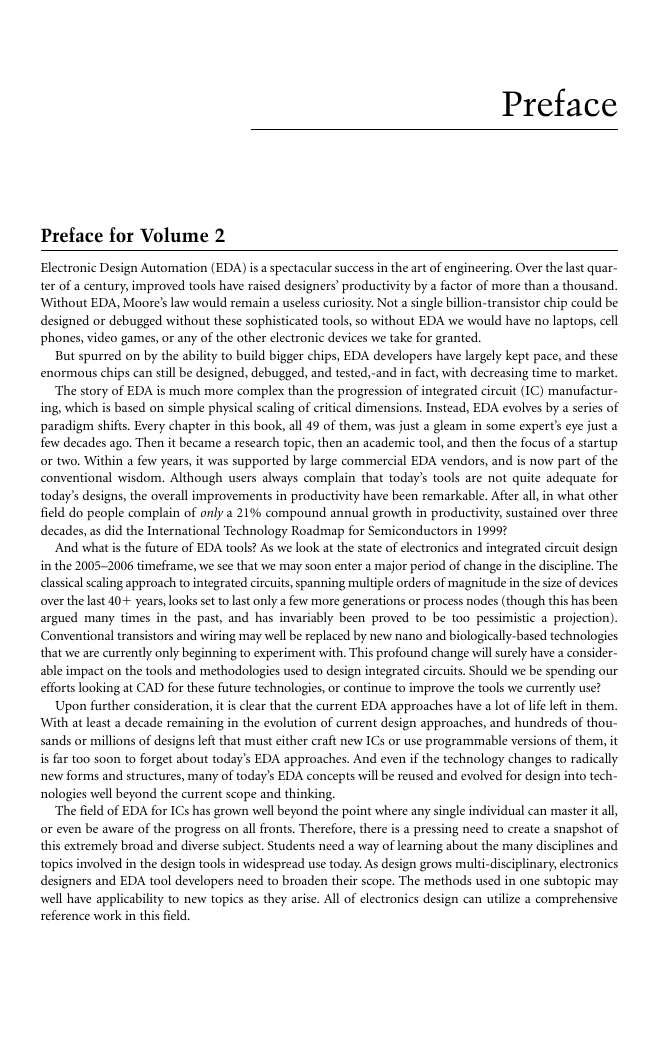








 2023年江西萍乡中考道德与法治真题及答案.doc
2023年江西萍乡中考道德与法治真题及答案.doc 2012年重庆南川中考生物真题及答案.doc
2012年重庆南川中考生物真题及答案.doc 2013年江西师范大学地理学综合及文艺理论基础考研真题.doc
2013年江西师范大学地理学综合及文艺理论基础考研真题.doc 2020年四川甘孜小升初语文真题及答案I卷.doc
2020年四川甘孜小升初语文真题及答案I卷.doc 2020年注册岩土工程师专业基础考试真题及答案.doc
2020年注册岩土工程师专业基础考试真题及答案.doc 2023-2024学年福建省厦门市九年级上学期数学月考试题及答案.doc
2023-2024学年福建省厦门市九年级上学期数学月考试题及答案.doc 2021-2022学年辽宁省沈阳市大东区九年级上学期语文期末试题及答案.doc
2021-2022学年辽宁省沈阳市大东区九年级上学期语文期末试题及答案.doc 2022-2023学年北京东城区初三第一学期物理期末试卷及答案.doc
2022-2023学年北京东城区初三第一学期物理期末试卷及答案.doc 2018上半年江西教师资格初中地理学科知识与教学能力真题及答案.doc
2018上半年江西教师资格初中地理学科知识与教学能力真题及答案.doc 2012年河北国家公务员申论考试真题及答案-省级.doc
2012年河北国家公务员申论考试真题及答案-省级.doc 2020-2021学年江苏省扬州市江都区邵樊片九年级上学期数学第一次质量检测试题及答案.doc
2020-2021学年江苏省扬州市江都区邵樊片九年级上学期数学第一次质量检测试题及答案.doc 2022下半年黑龙江教师资格证中学综合素质真题及答案.doc
2022下半年黑龙江教师资格证中学综合素质真题及答案.doc